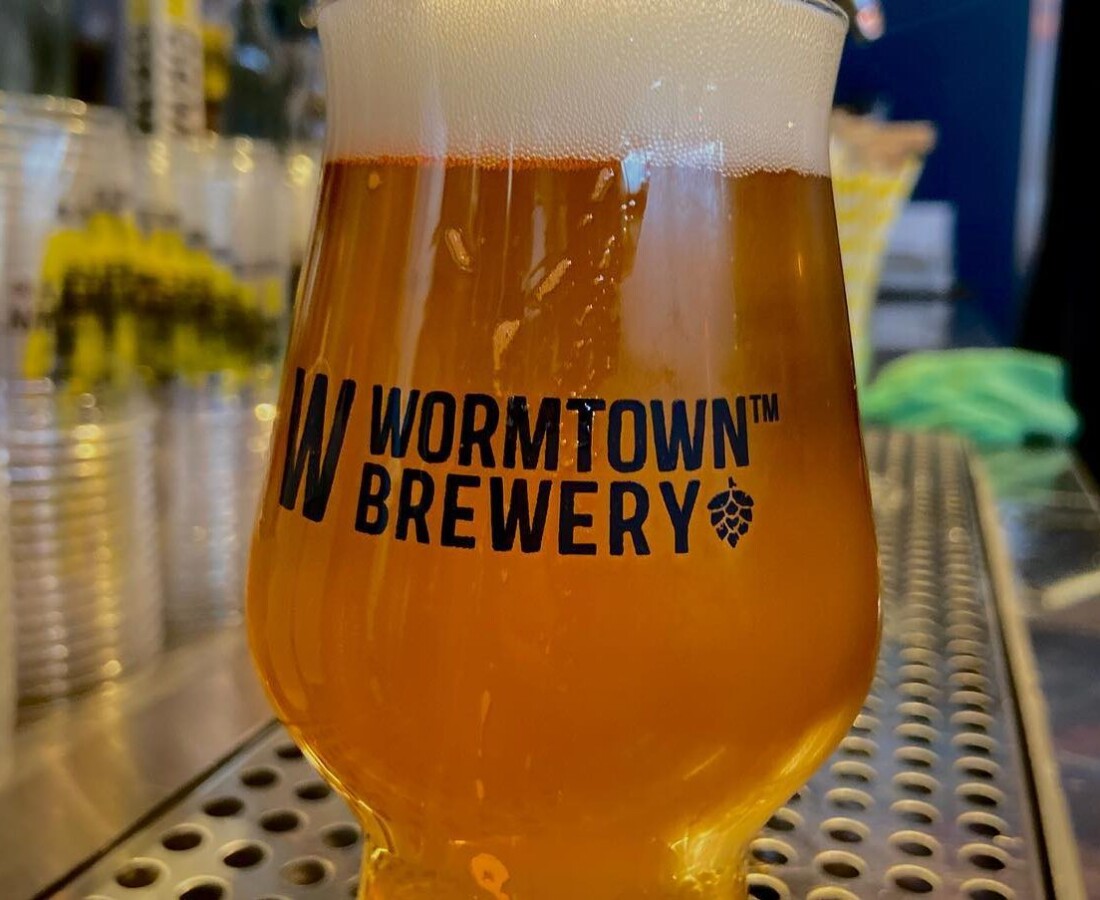By Jon Reynolds
Kary Shumway, CFO at Wormtown Brewery, brings a wealth of experience in strategic planning, finance, distribution, logistics, pricing strategies, cash flow planning, budgeting, and more to UVM’s Business of Craft Beer program. Learn more about Kary’s start in the craft brewing industry in this short video.
We recently caught up with Kary to talk about what he thinks are the keys to success in craft brewing and his thoughts on some of the latest trends in craft beer.
JR: “Pivoting” was the buzzword for craft brewers in 2020; Is “Reverse Pivot” the new buzzword of 2021? COVID is part of the on-premise demise, but how do supply chain issues impact craft beer sales as well?
KS: The key as I see it is to be nimble with speed and agility. I compare this to the basketball triple threat of shoot, pass and pivot. The need to have both bases covered—on-premise and off-premise and being nimble enough to “pivot” to programs that target which way the market is heading. The key word I use to define this is “diversification,” both in your path-to-market and your portfolio development. Watch industry trends and plan for change in future years.
JR: With nearly 9,000 craft brewers recognized by the Brewers Association (BA) in business today, is there room for more, or will we see multiple failures? What are the main reasons craft brewers will fail?
KS: Yes, there is room for more craft brewers, particularly in low CDI (non-saturated markets). “Local beer” is viewed by consumers as higher in quality, handcrafted, and more flavorful. Here are the top four financial controls that craft brewers can implement to prevent failure:
- Cash flow management
- Access to capital
- Debt management/debt service
- Margin Analysis (draught vs. package)
JR: Though slowing, the fastest growing segment in the beer industry today has been hard seltzer. White Claw (Mark Anthony) and Truly (Boston Beer) are leading, with many strong, well-financed followers. Are there too many large well-known brands vying for limited shelf and cooler space that craft brewer hard seltzer products won’t get off the ground?
KS: The key for any craft brewer looking at a high growth segment like hard seltzer is develop products with a strategic POD—this can be done by developing a brand positioning that:
- Creates a “craft seltzer” rather than a “mainstream seltzer” positioning
- Solicits both distributor and retailer opinions on whether there is a need for a craft seltzer in your market
- Creates a “craft” option that has local authenticity, local branding, local ingredients, local packaging icons and architecture and local test batches to get it right.
JR: With the current increased costs that craft brewers are realizing in fuel, ingredients, packaging, CO₂, natural gas and wages/COVID prevention, what do you see for potential price increases in packaged goods and draught (kegs) for craft brewers in early 2022?
KS: Yes, price increases are anticipated for craft beer in 2022. The strategy for craft brewers to plan for a potential raise in future years can be done in many ways:
- As your costs go up, you can pass along those cost increases to your distributors. If you’re a self-distribution operation, the costs would be passed along to your retailers.
- As a brewer, you can “eat” the price increase and hold your current price. It could provide a short-term competitive advantage. Follow competition 6 or 12 months later.
- The key to any strategy is to review all competitive price raises and strategically position your brand(s) at the optimal price point that makes sense for your brewery. Review both your package and keg costs and pricing and ensure you are competitive. Make adjustments to your pricing before you announce them to your customers.
Taproom Trends in Craft Brewing
JR: Are taprooms evolving into new locations where they can stand out rather than in new business development centers, strip malls or neighborhoods?
KS: Taprooms are evolving in the U.S. today and expansion is driving the location selection for tomorrow. You need to stand out from the crowd with a “cool place.” The “cool part” comes from the aesthetics/look and feel of your brewery—throw open garage doors, outdoor fire pits, and games/entertainment augment the layout and design. Here are three classic examples of new and innovative pop-up taprooms that create the “look and feel” of tomorrow:
- Wormtown Brewery at Gillette Stadium’s Patriot Place
- Five Boroughs Brewery Pop-Up Brewery and Exclusive View From The Top Craft Beer at the Observatory on top of the Empire State Building
- Upslope Brewery Backcountry Taproom in the Arapahoe National Forest
JR: Does Boston Beer and Pepsi’s new announcement of their partnership with HARD MTN DEW Hard Seltzer, create a fourth “national footprint” option for craft brewers to gain access to off-premise and on-premise retail outlets outside their brewery walls?
KS: The opportunity does exist for a new “national footprint” option to develop. There are many examples of companies who have developed their own unique paths-to-market, including Red Bull, Brew Pipeline and now, Green Rebel Brewing (BBC and Pepsi Platform). The benefits still exist for using the traditional three-tier distribution networks, which include:
- Retail relationships (traditional distributors have 30-50 years of calling on their retail buyers)
- Focus (traditional distributors provide the infrastructure of delivery systems, sales forces and draught expertise for craft beers to gain traction and succeed)
- On-Premise (traditional distributors control many of the tap handles on-premise, so your chances of getting placed in multi-tap taverns and pubs are enhanced if your Brewery is part of a larger portfolio of brands)
JR: Where do you see the craft beer Industry heading in the next few years? Are craft brewers well-positioned to compete against spirits, wine, CBD and/or non-alcoholic producers who are crossing over into alcohol (Pepsi, Rockstar and Gallo)?
KS: Craft brewers usually do not have the capital to compete with the large NA players that are entering the alcohol business. The benefits of a new alcohol beverages emerging on the national distribution scene are:
- They could create new shelf space for craft beers—this helps everyone
- Large NA/Wine & Spirit players tend to “out-muscle” other beverage products with better merchandising, displays and end caps
- Craft brewers gain local support who buy craft beers that are brewed locally, are perceived as fresher, and have better taste profiles—consumers like having choices
Financial Literacy is Key to Brewing Success
JR: What do you see as the largest need that craft brewers have in the finance area?
KS: There are many challenges that craft brewers have in creating a profitable business enterprise. Here are a few financial strategies that every craft brewer should implement to deliver a better bottom line:
- Cash Management Systems (Access to capital via line of credit can help)
- Financial Forecast (Monthly and Annual Budget using forecasts for volume, sales margins, operating expenses and cash flow)
- Business Plan (Can be as short as one page—update every year and revise as changes develop)
JR: You offer a free online course through the University of Vermont called Maximizing Taproom Revenue. Tell us why this type of course is important in the brewing industry and how does it help with brewery’s financial literacy?
KS: Craft brewers need to better understand the financial statements and what’s behind the numbers. Many can enter their expenses and track them via software packages like Quickbooks, but most don’t understand the financial processes that can help them maximize their taproom revenue. Our course provides the systems and processes that need to be set up for tracking these measurement tools:
- Cost control metrics
- Scorecard of Performance
- Sales Strategies for Taprooms
- Distribution Strategies and Options
- Forecasting Procedures
- Practical Case Studies
- Key learnings
JR: Why do you think the UVM Business of Craft Beer program is key to business success for craft brewers?
KS: Many newcomers start as home brewers or work for another craft brewer and aspire to start their own brewery. The UVM BOCB course compresses the learning curve for aspiring brewers. The “wish I knew this before” list of potential pitfalls can be shortened by taking this course. It is full encompassing with Operations, Finance, Marketing & Branding, Social Media, Sales & Distribution and Taproom management all covered in the UVM BOCB course.
Learn more about UVM’s Business of Craft Beer Professional Certificate Today.

Jon Reynolds is the founder of Brewplan, a strategic marketing advisor to craft brewers, craft distilleries, boutique wineries, and a Certified Instructor in the UVM Business of Craft Beer Professional Certificate Program. He writes about business trends, beer consumers, distributor issues, legislation that affects craft brewers, marketing tools, and strategic planning to improve brewery profits.
Views and opinions expressed herein are those of the author who has spent more than 40+ years in the beer, wine and spirits industry and are provided for informational purposes only. The information set forth reflects the author’s opinion of current trends in the industry and should be researched further to make your own business conclusions.




